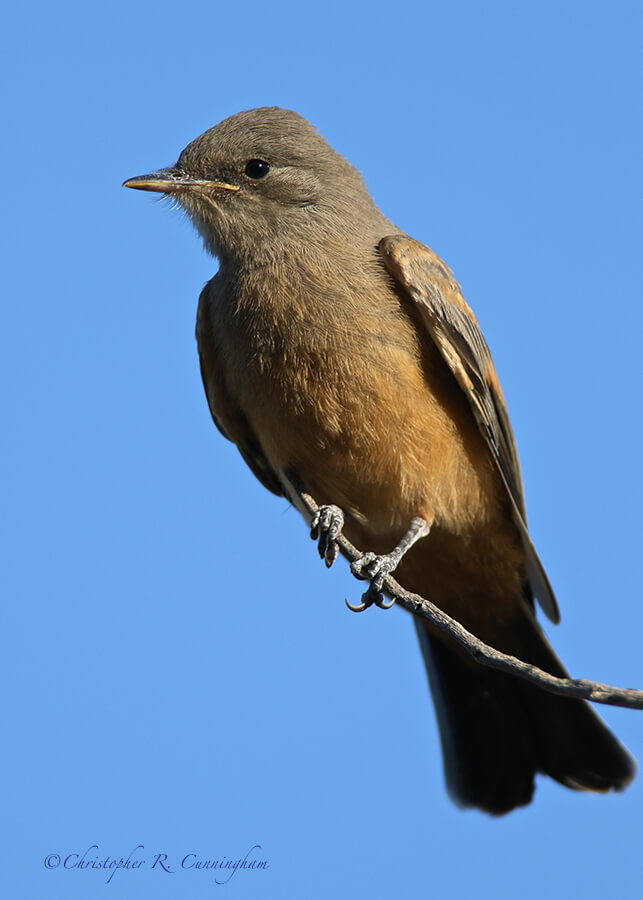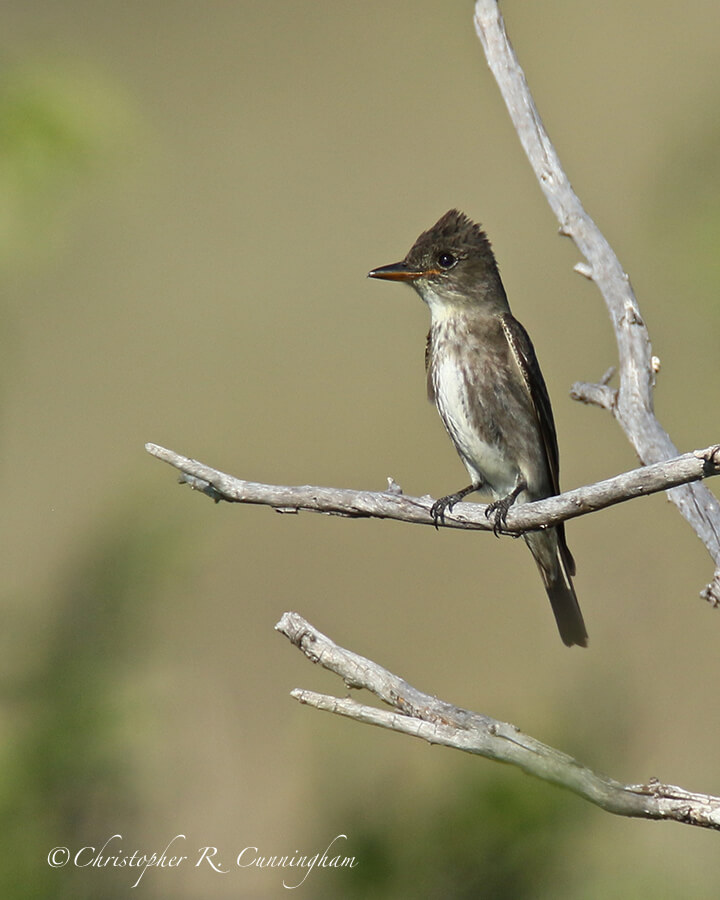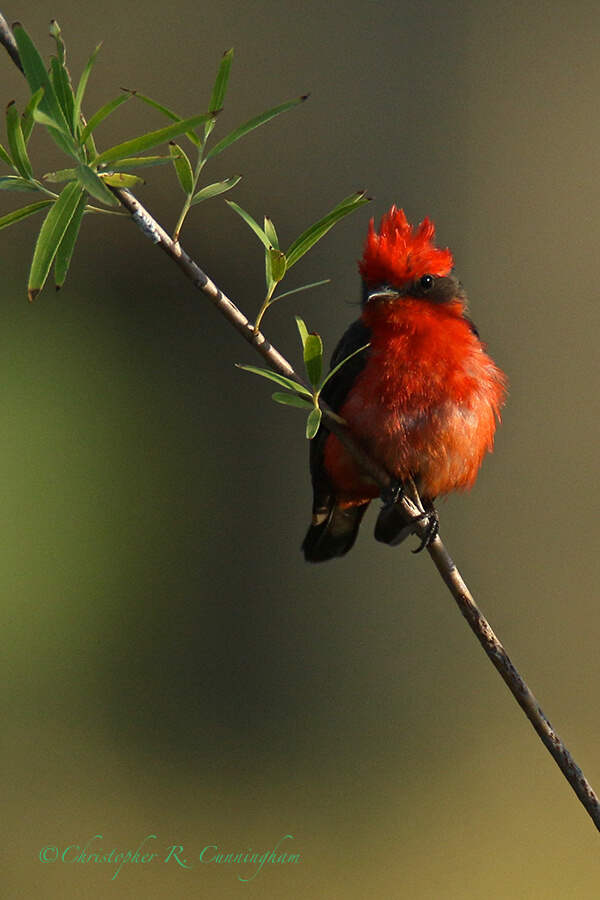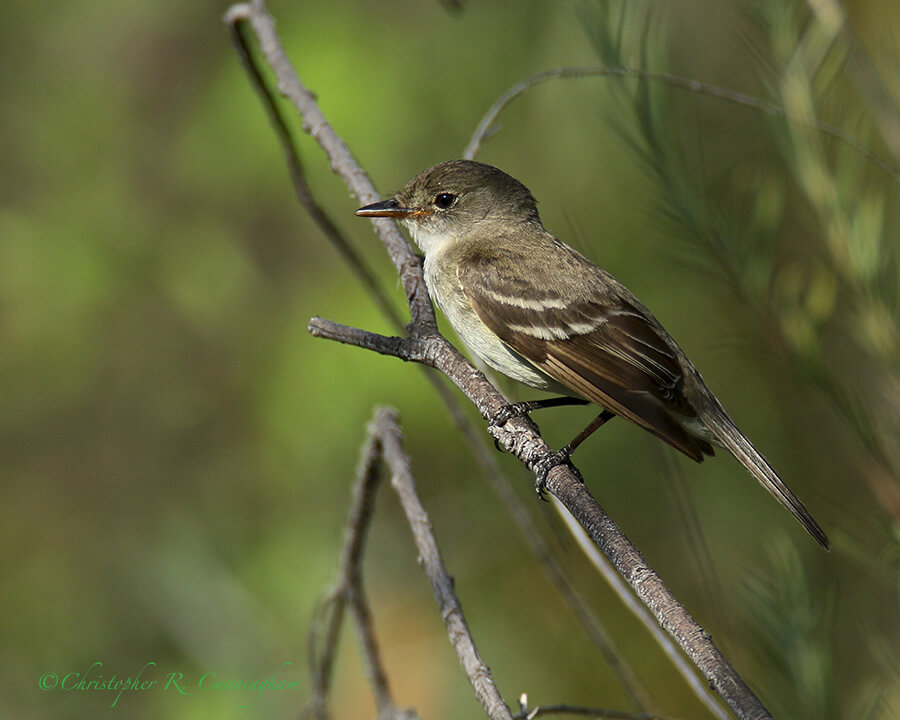In the empire of desert, water is the king and shadow is the queen.―Mehmet Murat ildan

Tyrant Flycatchers and kin (Family Tyrannidae) are among the most charming of birds with their curiosity and sallying hunting style. On our recent visit to Big Bend National Park, we found flycatchers everywhere, in all habitats. Small flocks of Say’s Phoebes were especially prominent around the buildings and parking areas of the Chisos Mountains Lodge and the undeveloped areas nearby. The lodge, being at an elevation of about 5400 feet, is near the upper altitude limit for these birds.

At the low altitude abandoned ranches we saw a greater diversity of flycatchers than at altitude. Many individual birds were extremely difficult to identify–even if perched in plain sight! Forget about those lurking in the shadows! Ash-throated Flycatchers, though, were likely the most abundant and seemed to be just about everywhere at low elevation. We spotted the unmistakable Vermilion Flycatcher at several such localities including the Rio Grande Valley Campgrounds and Daniels Ranch–so it wasn’t always an ID guessing game!

Of all the identification puzzlements afflicting birding, the Empidonax flycatchers take the cake. Widely regarded as “nearly indistinguishable” visually, birders must rely on song (aided by distribution) to confidently identify some of these species. But what if the birds are not singing? Well . . . I guess one must learn to live with uncertainty.
The bird below, for example, would seem to be a Willow Flycatcher. Given the ranges of Willow Flycatcher subspecies, that would likely make this bird a member of the Southwestern race, Empidonax triallii extimus, a federally-listed endangered subspecies. I invite comment from readers who wish to confirm or deny my tentative identification, though.

©2015 Christopher R. Cunningham. All rights reserved. No text or images may be duplicated or distributed without permission.